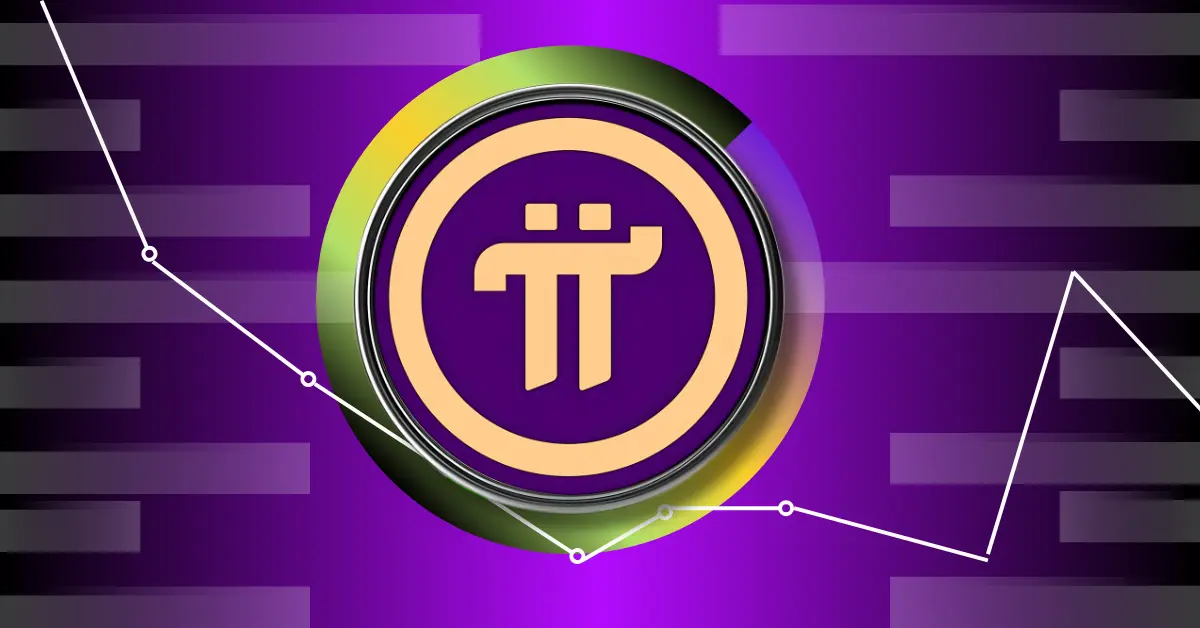Pi Network’s journey from a mobile-first cryptocurrency to a potential mainstream player has been marked by intense speculation, rapid price swings, and growing ecosystem development. As the price fluctuates between $0.60 and $1.30, the question remains: can Pi sustain its momentum beyond the hype?
The Dual Nature of Pi’s Price Movement
Pi’s price action reflects a delicate balance between speculative trading and genuine ecosystem growth. On one hand, the token’s volatility—with surges to $1.30 and sharp corrections—is driven by FOMO around potential exchange listings and positive rumors. Analysts often describe these movements as “trader-driven,” detached from daily activity or functional adoption.
However, beneath the surface, Pi Network is laying the groundwork for real demand. The $100 million ecosystem fund, designed to incentivize developers to build applications on Pi, is a critical step toward utility. Additionally, merchant adoption—including skincare brands and real estate firms—expands Pi’s real-world use cases. With a growing user base, Pi is gradually transitioning from a speculative asset to one with tangible utility.
Current Price Dynamics and Technical Levels
Pi’s price typically oscillates between $0.60 and $1.30, with significant volatility. Recent price spikes, such as the “Pi Network Doubles in a Week” headlines, have been followed by sharp corrections. Despite this, the average price floor has shown an upward trend, with rebounds becoming more frequent and robust.
Technical analysts highlight key support and resistance levels:
– Support: $0.60–$0.90 has proven to be a strong floor, with multiple rebounds occurring at these prices.
– Resistance: Breaking and holding above $1.00–$1.30 remains a challenge, with brief spikes often followed by corrections.
– Volatility: Pi’s intraday movements are highly volatile, making it unsuitable for risk-averse investors.
Fundamentally, the trend suggests higher lows if Pi continues to deliver updates and onboard users.
Key Growth Catalysts
Several factors are driving demand for Pi:
Mainnet Launch and Exchange Listings
A major exchange listing—such as on Coinbase or Binance—could significantly boost Pi’s liquidity and attract new investors. Currently, most trading occurs on less-established platforms, limiting accessibility.
App Ecosystem and Developer Incentives
The $100 million ecosystem fund is fueling developer grants, hackathons, and app contests, positioning Pi as more than just a transfer token. A thriving app ecosystem is essential for sustained demand, as it encourages ongoing transaction volume.
Retail and Real Estate Integration
Every new merchant or real estate company accepting Pi strengthens its utility. While still niche, these integrations signal that Pi is more than a speculative asset—it’s a currency with real-world applications.
Community Strength and Migration
Pi’s grassroots, mobile-first approach has attracted millions of users. Planned migrations, allowing users to move tokens into wallets for trading or spending, are critical for increasing liquidity and transaction volume.
Price Predictions: Realistic vs. Speculative
Short to Mid-Term (2025–2027): $1–$3 Range
Analysts predict Pi could reach $1–$3 in the next two years, contingent on mainnet rollout, increased app utility, and major exchange listings. If user growth and merchant activity continue, this range is plausible. However, bearish scenarios warn of oversupply risks, which could push prices toward $0.50 if the broader altcoin market declines.
Longer Term (2030 and Beyond): $10+ Potential
More ambitious projections suggest Pi could reach $10 or more by 2030, provided it achieves ecosystem maturity, regulatory clarity, and sustained developer activity. However, these predictions remain highly speculative and depend on Pi’s ability to deliver on its promises.
Risks and Challenges
Despite its potential, Pi faces several hurdles:
– Volatility and Utility Gaps: High volatility may deter institutional investors, while the lack of a “killer app” limits long-term demand.
– Token Unlocks and Oversupply: If too many tokens enter the market simultaneously, price stability could be at risk.
– Unproven Long-Term Utility: Pi’s success hinges on its ability to develop applications that users worldwide find valuable.
– Community Speculation Spillover: While the community is passionate, excessive hype could lead to market bubbles and subsequent corrections.
Conclusion: A Path Forward
Pi Network is evolving from a speculative project into a contender with real-world applications. Its price movements are increasingly influenced by ecosystem development rather than pure hype. However, sustained growth depends on several factors:
– A successful mainnet launch and migration process.
– The rollout of high-impact applications that drive usage.
– Listings on major exchanges to enhance liquidity.
– Effective management of token supply to avoid destabilizing price swings.
While $100 price targets remain speculative, a $1–$3 range is achievable if Pi continues to deliver on its promises. Ultimately, Pi’s long-term success will depend on its ability to transition from a speculative asset to a currency with real utility. If it can achieve this, Pi may well secure a place in the mainstream cryptocurrency landscape.

